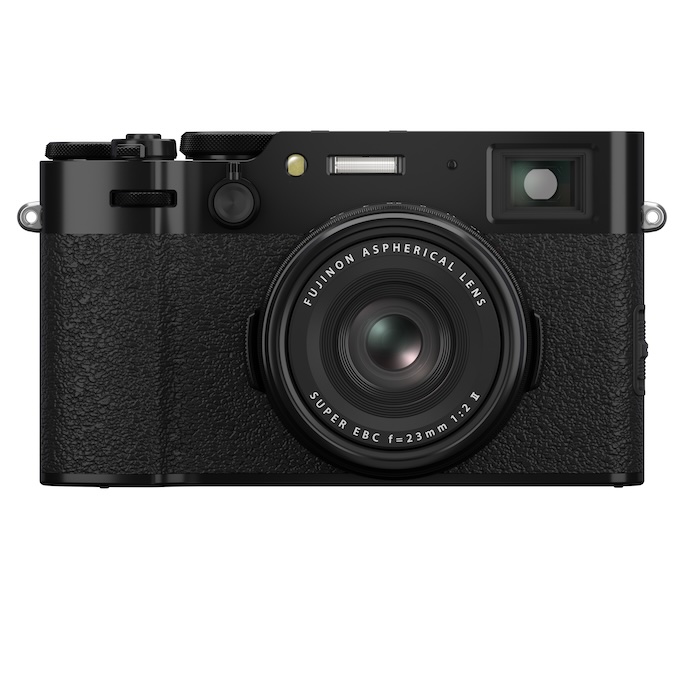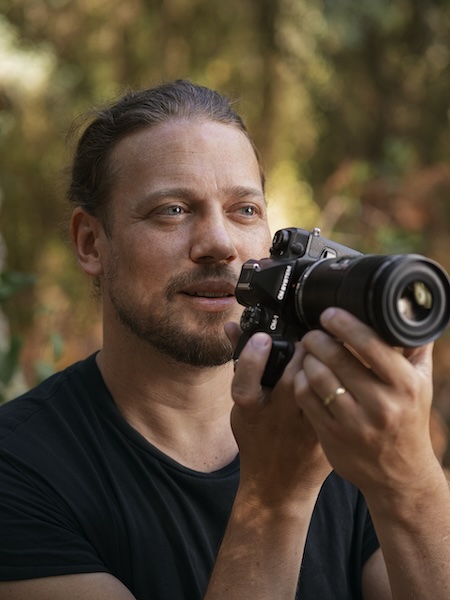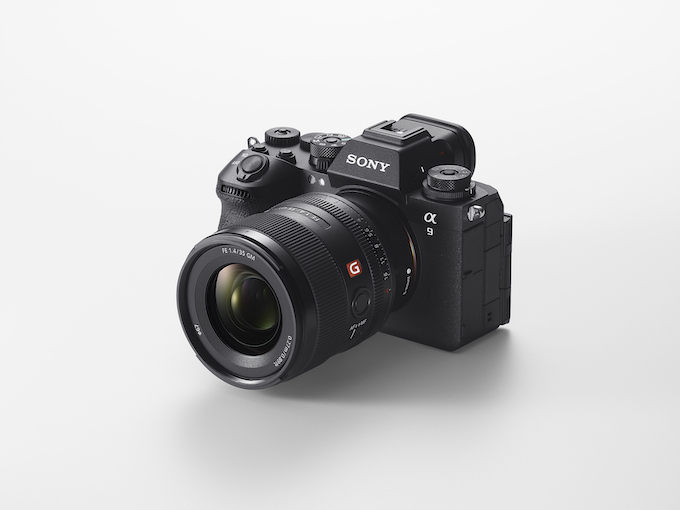Cameras
Lab Test: Canon 6D Mark II
October 11, 2017
Rangefinder is a member of the Technical Image Press Association which has contracted with Image Engineering to perform detailed lab tests of digital cameras. See here for a full methodological rundown of how Image Engineering puts cameras through their paces. Full res files of every visual in this review are available to download for your pixel-peeping pleasure here.
Resolution
- Marked improvement in resolution compared to the Canon 6D: the 6D Mark II’s 26 Megapixel sensor is larger than the 6D’s 20 Megapixel sensor, and the newer model uses a greater proportion of its sensor at nearly all ISOs tested.
- At ISO100, the Canon 6D Mark II captures 1966 line pairs per picture height, using 95% of what theoretically could be used of its 26 Megapixel sensor.
- The 6D Mark II uses more than 90% of its sensor at ISOs from ISO100 to ISO1600.
- Resolution in images shot by the Canon 6D Mark II at higher ISOs (above ISO3200) is less good, albeit strongly improved in comparison to the Canon 6D.
- A visual inspection of an image captured by the 6D Mark II at ISO12800 of the complex detailed black-and-white pattern of the Siemens star, shows only a slight softening compared to an image shot at ISO100.

Texture Loss
- The Canon 6D Mark II captures at least as high a proportion of line pairs per picture height in high and low-contrast scenes as its predecessor, except low contrast at high ISO speeds (ISO12800 and above).
- With the larger sensor of the 6D Mark II, more artifacts are recorded.
- At both high- and low-contrast, shooting at ISOs ranging from ISO100 to ISO800, texture is reproduced well.
- Even at ISO1600, there is observable loss only of the finest of high-contrast detail. However, low-contrast detail is observably degraded by smoothing at this ISO.
- At ISO6400, low-contrast detail is largely lost, and at ISO12800, there is more noise in the image than details.
- At ISO hi1 (equivalent to ISO51200), noise and smoothing combine to provide an image which has lost a lot of coarse as well as fine detail.

Edge Contrast/Sharpening
- The sharpening curve shows that the degree of overshoot and undershoot to be relatively moderate.
- This is a major improvement over the strong sharpening that could be seen in tests of the Canon 6D.

Visual Noise
- Noise in the darker mid-tones becomes more visible with higher ISO, especially in viewing condition 1 (100% view).
- Noise measurements are below the observable threshold of 0.5 in shots taken at lower ISO and viewed a small print or on the screen of a mobile phone (viewing condition 2), but noise would be noticeable in other viewing conditions (VN 3, PC screen or large print, and VN1, 100% on monitor).
- The amount of observable noise is consistent in each viewing condition, at ISOs from ISO100 through ISO3200. At higher ISOs, the amount of noise increases.
- Noise measurements made in the middle range of speed (ISO400 – ISO6400) are better than results of tests made with the 6D.
Dynamic Range
- More than 9 f-stops of dynamic range at ISOs up to ISO 6400.
- Similar to –or even a little smaller than- the dynamic range of more than 10 f-stops, exhibited by the previous model.

Color Reproduction
- Color reproduction is fairly good, with strong deviation from the reference color only with a few intense reds.
- Mid-tones and neutral colors were the most faithfully reproduced.
Automatic white balance
- Automatic white balance is greatly improved over the 6D.
- Automatic while balance in the 6D Mark II delivers excellent results (between 0.4 and 0.8) at all normal ISOs and even hi1. Only at hi2 (equivalent to ISO 102400) does the automatic white balance have a less good measurement of 1.6.

Video
- Image quality in video mode is less good than in still photography. Resolution is poorer at both high and low ISO.
- Overshoots and undershoots from sharpening are stronger along contrasty edges and the effect of the sharpening is visually discernable in frames taken from video.
- Texture loss is relatively large at both high and low ISOs.
- Visual noise is obvious in the darker parts of a video image at high ISO.
In Depth
The 6D Mark II creates good quality images. At ISO 100, the 6D Mark II captures 1966 line pairs per picture height, using 95% of its 26 Megapixel sensor. The resolution remains consistently high to ISO 1600, where 92% of the theoretical maximum is used (1911 line pairs per picture height). Similar resolution quality between ISO 100 and ISO 1600 means the 6D Mark II user can shoot at ISO 1600 with the same confidence regarding resolution as at ISO100.
This grants a lot of flexibility in daylight situations. Image resolution is greatly improved compared to the previous model, the 6D with its 20 Megapixel sensor.
Although the Canon 6D Mark II has an ISO range up to 40000 (102400 extended), the resolution is less good in images at higher ISOs (ISO 3200 and above). However, even this less good resolution is strongly improved in comparison to the 6D. Visual inspection of an image captured by the 6D Mark II at ISO 12800 of the complex detailed black-and-white pattern of the Siemens star, shows only a slight softening compared to ISO 100. However, resolution at the highest ISOs is noticeably poor (hi1, equivalent to ISO 51200, and hi2, equivalent to ISO 102400); a user is unlikely to find these extended ISOs of much utility.
The Canon 6D Mark II captures at least as high a proportion of line pairs per picture height in high and low-contrast scenes as its predecessor, with the exception of low-contrast scenes photographed using high ISO speeds (ISO12800 and above). As the sensor is larger, these test results indicate that the recording of texture in images by the 6D Mark II is better than the 6D. An examination of images made by the 6D Mark II of the test chart shows that both high- and low-contrast texture is captured well at ISOs ranging from ISO100 to ISO800.
Lab measurements show that more artifacts are present in images made by the 6D Mark II than its predecessor; this is to be expected with a larger sensor. Shooting at ISOs ranging from ISO 100 to ISO 800, high- and low-contrast texture is reproduced well. At higher ISOs, high-contrast texture is reproduced better than low-contrast texture.
At ISO 1600, only the finest detail in a high-contrast image is noticeably lost. However, also at ISO 1600, low-contrast detail is observably degraded by smoothing. This can be observed when comparing the image made by the 6D Mark II at ISO 1600 to one shot at a lower ISO. Increasing amounts of texture is smoothed out of the image as ISO increases. At ISO 6400, low-contrast detail is largely lost, and at ISO 12800, there is more noise in the image than recorded details. At ISO hi1, noise and smoothing combine to provide an image which has lost much coarse as well as fine detail.
Lab tests of visual noise show that noise would not be very visible in images taken at lower ISO, when viewed as a small print or on the screen of a mobile phone (viewing condition 2), although it would be noticeable in other viewing conditions (VN 3, PC screen or large print, and VN1, 100% on monitor). The amount of observable noise is consistent in each viewing condition, at ISOs ranging from ISO100 through ISO 3200.
Noise in the darker mid-tones becomes more visible with higher ISO, especially in viewing condition 1 (100% view). In viewing condition 1, noise values are particularly high at ISO 25600 and the extended ISOs. Noise measurements made in the middle range of speed (ISO 400 – ISO 6400) show improvements compared with the 6D.
The tendency of Canons to be a bit heavy-handed with sharpening, has been addressed in this model, and the sharpening curve shows only a moderate degree of overshoot and undershoot. This is a major improvement over the strong sharpening that could be seen in tests of the Canon 6D.
The automatic white balance delivers excellent results (between 0.4 and 0.8) at all normal ISOs and even hi1. Only at ISOhi2, does the automatic white balance have a measurement over 1.0 (1.6). The overall white balance performance is a great improvement over the previous model, the 6D, which produced test results showing poor automatic white balance at all ISOs (ranging from 4.6 to 5.5) and even higher values in the extended ISO range.
The user can also set the camera to measure white balance, as well as being able to select a specific color temperature.
This camera could be used with fairly good results for portrait photography, as color reproduction is good, with strong deviation from the reference color only with a few intense reds. Mid-tones and neutral colors were the most faithfully reproduced. Visual inspection of the reproduction of a photo of faces with different skin tones shows consistent and realistic skin tone reproduction at ISOs of from 100 to 800. At ISO1600, however, the brighter skin tones become a bit washed out, indicating loss of nuance and subtlety in the portrait.
The 6D Mark II has a fairly good dynamic range of more than 9 f-stops at ISOs up to ISO6400: landscape photography could be another use. This is somewhat smaller than the dynamic range of the 6D, which was over 10 f-stops.
Autofocusing & Performance
The speed of the Canon 6D Mark II is good: it can shoot 6.4 frames per second in JPEG until the card is full.
In RAW mode, it can shoot 6.8 frames per second to a maximum of 22 before slowing down. This is a significant improvement compared to the 6D, which could shoot only 4.4 frames per second in either JPEG or RAW format.
Autofocus using the optical viewfinder takes 0.46 seconds in bright light. This is a tiny bit slower than the previous model, which tests at 0.35 second, but it is unlikely that a tenth of a second will be noticed by the average user. Autofocus speed in low light, at 0.54 seconds, is also a bit slower than the 6D.
The autofocus in bright light during Live View is greatly improved over the 6D’s slow 2.2 seconds. The 6D Mark II focusses in just over a third of a second (0.36 seconds) in bright light. In low light conditions using Live View, the autofocus takes a half a second (0.51 second).
Video
The image quality in video mode is less good than in still photography, and resolution is poorer at both high and low ISO. Texture loss is relatively large at both high and low ISOs, and visual noise is obvious in the darker parts of a video image at high ISO. Overshoots and undershoots due to sharpening are also visually discernable in frames taken from video.





